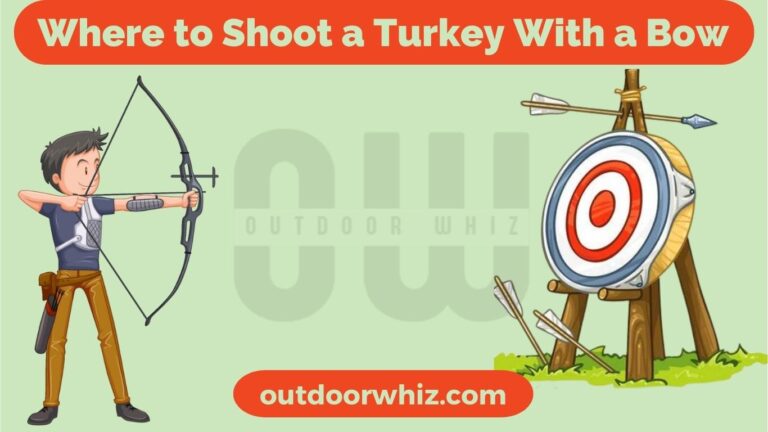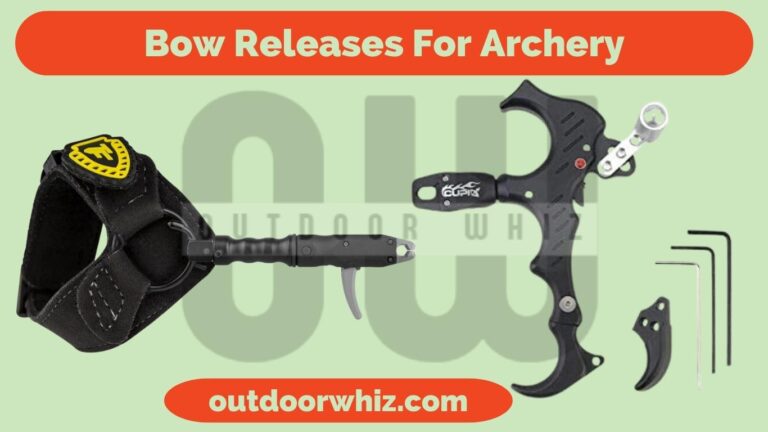When you own a bow, you must string and restring it more often. Stringing a bow is an essential skill every archer should know.
If you are about to take apart your longbow, you should first restring it and make sure you know how to string a longbow by hand or through a tool.

If you look forward to finding a way to string a longbow, you are at the right place. This article contains all the information about stringing and restringing your longbow.
Page Contents
How to String a Longbow?
You can take it to an archery shop to string and restring your longbow, but if you want to gain all the skills regarding archery, this essential skill is not very difficult to understand. You can also learn to string a longbow from your local archery shop.
Stringing a bow is easy, but you need a tool called a bow-stringer; this enables the archer to string a longbow safely, there are other methods as well, but through a bow-stringer, you can do it more effectively. Stay tuned to get complete information about how you can string a longbow.
How to String a Longbow with a Stringer?
Stringing a longbow with a bow-stringer is a safer option and the best way to string a longbow. You can also string a longbow by hand, leaving you with the chance of ruining your bow if you make a slight mistake.
You can learn how to string a longbow through a YouTube video. Search how to string a longbow video, and you will get many results. Several bow-stringer are available in the market that you can adapt to string your longbow; all work the same.
These bow-stringers help the archers flex their bows, giving them enough space to slide the string into place quickly and swiftly. You can also visit your local archery shop to get some basic skills, and he can answer your questions and give you specific tips.
Here is a step-by-step method to string your bow with the help of a bow-stringer that is a proper way to string a longbow;
Step 1: Prepare Your Longbow
Take your bow and install all its limbs into it. If it has three pieces, you can follow the manufacturer’s instructions or go to the archery shop to ask. Installing the limbs is necessary before you string the bow.
The top string loop of the bow should be larger than the bottom loop, and locate the top string loop. Take the top loop to the top limb and then the bottom loop into the string grooves and connect to the bottom limb. Now, you can spot the string grooves on the tip of every limb. These string grooves are going to attach the bowstrings to them.
Step 2: Add the Stringer on the Bow
Add the stringer from the top limb; for this, you must place the saddle end of the bow stringer on the limb behind the string loop. The saddle end of the stringer is flat and open, and it will lie flat on the limb. String the bottom limb tip by placing the pouch end safely, this pouch end is enclosed, and the bow’s tip is held. After perfectly installing the stringer, you can add the string to your bow.
Step 3: Add Strings to the Bow
Stand on the bow-stringer with both feet and ensure the distance between your feet is one shoulder width. Now flex the bow’s limbs by holding the bow with its grip and pulling the strings. The bow’s weight will support the stringer when you slide the top string loop into the limn tip’s string grooves.
This step needs an expert to observe you and guide you as beginners usually don’t know how much flexing would be fine and if you are not putting a lot of pressure on the stringer when your step onto it.
For expert supervision, you can go to an archery shop and string in front of him or ask him to perform before you can observe. One of the main advantages of visiting an archery shop is they can safely string your bow without any risk of damage to your current bow.
Step 4: Test Your Bow
After securely installing the top string loop, you can remove the bow stringer. Take the bow in the shooting position, so its limbs face you. Ensure the string is perfectly attached; if it is not safely and correctly installed, the limb will release from you, and the string will also come off eventually. That is why it is necessary to check the strings.
Step 5: Check the Brace Height
The brace height of a bow is the gap between the bowstring and the deepest part where you can grip. This brace height is crucial for maintaining the brace height; this helps in the aiming of your arrow and its impact point. You can check the brace height by placing the bow square in the grip’s deepest part and checking the measurement.
If the brace height is low, give your bow a few twists; if the height is too high, release some twists. When you add or release the twists from your bow, restring your bow and then check the brace height. After repeating this step, you will eventually know how many twists you need to reach your desired brace height.
How To String a Longbow Without a Stringer?
You can also string your bow using other methods that do not involve a stringer, such as; historical bow stringing methods did not involve stringer. The archers used kneeling step-through to string their bows. There is also a step-through method that you can use to string your bow.
Traditional eastern archers first used this method; they placed a bow limb with one end of the string already nocked over one leg, and the archer took the other limb forward. Traditional archers used their core strength to string their bows by twisting and opening the twists.
Ancient archers also used the push-pull method to string their bows; in this method, archers take one nocked end of the bow inside their foot and then pull the center of the bow. You can add the string to the bow during this stretching.
The push-pull method also utilized a lot of strength. Archers also used the seated method to string their bows; in this method, heavier bows were stringed. Pressure is applied on the limbs by bracing the bow with the help of the legs while sitting on the floor.
How To String a Recurve Longbow?
After learning how to string a longbow, stringing a recurve is not very tough. There are several ways to string a recurve bow; historically step-through method to string a recurve bow. This step-through method is so accurate and valid that the latest archers still adopt it.
You can also string your recurve bow with the help of a bow stringer, which is precisely similar to the method given above for the longbow. That is why you should know the step-though method as well;
Step 1:
You can start by hooking the bottom loop of the string around the bottom of the bow. Hold the correct string and put the shorter fingerguard on the top of the bow.
Step 2:
Now, hold the bow in of you and step through the bow and the string. You should not lose the bow and hold it securely in the front of your shin and the back of your thigh.
Step 3:
Take the bow’s limbs in front of your eyes and turn the trunk of your body to let your arms bend the bow perfectly. Attach the string one by one; first, attach the front and bottom limbs. If you use Dacron strings, you should give 10 to 12 twists before you hook on the bow.
Step 4:
Now you can check each end of the bow to make sure your strings are seated alright, and they are all secured. You can also check this by shooting with this bow.
How To Make a Longbow String?
When you learn the technique of stringing your bow with and without a stringer and how to string the recurve longbow, you might want to know how to build a longbow string. During stringing, there is a possibility that your strings will wear out or get damaged. You can make another new bowstring for your recurve longbow. The materials you will need to make a new bowstring include the following;
- Vince tight
- Tendon Yarn such as Dacron
- Tendon gallows or screws clamps
- Drill
- Knife or scissors
To make a longbow, take a string and cut it 2 inches longer than your bow. Now tie the string into a knot and hold the string tightly. Add the knot of your string into a tight vice, put the end of the other side of the string inside a drill, and tighten it.
Now spin the drill and twist it as much as you can. Ensure the string is not too tight to curl up when you take it out of the vice. After taking it out of the vice, tie the other side in the drill as you did for the vice.
Tie a loop in the form that can easily fit into your bow, and it should not be too tight to store tension. If the string breaks when used, this means it is too tight. In this case, you need to take another strand of the string to make it work.
How To Restring a Longbow?
You can restring a longbow by locating your bow’s limb bolts and adding an Allen wrench. The limbs of your bow will connect to the riser and take out the bolts. Now use both your feet and step on the bow string.
Attain a full draw position by pulling your bow to a maximum size. Now take one hand on the bow and replace the bowstring with the other hand. Start lowering your longbow until your limbs are at the mean position. You can now take the bowstring and replace them with the adjusted fitting you want.
How To String English Longbow?
You can string an English Longbow by using a bow stringer; there are different methods you can use to string a longbow, including; the push-pull method or step-through method. All these methods are explained above in the article. A bow stringer is the safest option of all.
How To Measure a Longbow for A String?
You can measure the longbow by laying the face of the bow down and measuring string groove to bowstring groove till the curve of the bow’s limb. Make sure you don’t go down into the grip area of the bow.
How To Tie a Longbow String?
Take a longbow string in both your hands; take the right strand and flip it to the left side of the string and make a circle. Now create a little overhand knot at the tip of the string that will act as a stopper. Now take the other side and do the same. Now you have two tied tips, flip it, and your longbow string is ready.






